This article is about the joy of photography using the Hasselblad X1D and capturing challenging high-dynamic-range night images. Yes, Christmas has gone by, but I feel the challenging scenery shows the strength of the Hasselblad in delivering low-noise, natural colour images in difficult circumstances and pictures are timeless for me. You can turn on some Christmas music if it helps!
Most reviews are extremely critical of the X1D in a similar vein to the negative comments often attracted by Leica. However, similar to Leica, the camera delivers superlative images with a wonderful haptic experience that focuses on the core of capturing images — aperture, shutter speed, ISO, manual/auto focus selection, exposure compensation.
Perfectionist
I am a perfectionist and purchased an X1D system after much personal debate over the past year. The Hassy was purchased only a few months ago although I knew that the X1D update would be coming any moment. But we went way past sufficiency on cameras some time ago and because the X1D had been around a long time, prices were coming down to a more affordable level.
I decided to buy and then stumbled upon a new system, including 2 lenses, that was being sold off by a camera dealer discontinuing Hasselblad by 35% off. Sometimes, one just gets lucky! I would have cheerfully purchased the amazing glass at full price but I am more than happy to help a dealer out.
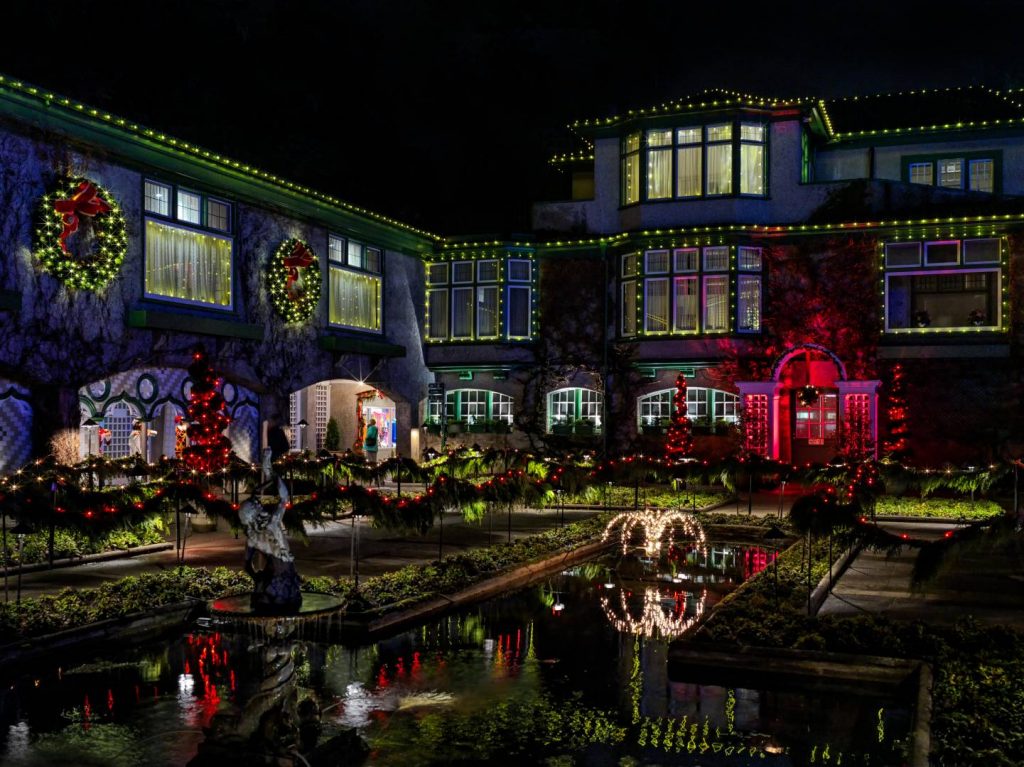
So, as a perfectionist and ex hardware and software development engineer of high tech systems, why did I “stupidly” purchase a few months ago an “obsolete” camera (“that never was a good camera” according to the armchair reviewers on the web)? Well, it is far from obsolete and for its intended purpose of methodical photography, day or night or indoors or outdoors, it is simply amazing and will be for years to come.
Max the Max
I have named my X1D camera Max as it has superb image files that are second to none that I have experienced. Also, I have the amazing Panasonic G9 m4/3 system to complement the X1D for zooms, non-redundant glass such as long telephotos, and for more spontaneous photography. I love that camera as well. I call my G9 Jack as it is master of none but it is certainly more than adequate for most trades contrary to the self-proclaimed “experts” on the web.
The X1D has a brilliant “old” proven 50 MP sensor that has 14-plus stops of dynamic range and wonderful colour rendition. Most importantly, Hasselblad is unique in calibrating each cameras sensor at all ISOs and includes approximately half a gig of calibration data in each camera. The files are wonderfully natural and neutral plus the pixels can be pushed a lot in post processing without colours needing a lot of reworking to fix. I find the auto white balance to be by far the best I have ever used; I rarely need to adjust compared to other cameras that usually needed some level of adjustment.
Shutter therapy
I was long overdue to get out for some “shutter therapy “, a term Robin Wong coined (“go out and enjoy making images” — robinwong.blogspot.com), as well as to capture some Christmas lights over the 2018 Christmas season. Here on the west coast of Canada, we had been hit with unusually extreme winds (70 to over 100 km/h) and very heavy constant rains. This caused extensive wind damage and lengthy power outages. There was more rain in the first two days of January than we get typically for the whole month. The weather finally cleared and I managed to get out for the second last day of the Magic of Christmas at The Butchart Gardens on Vancouver Island. It is about 90 minutes from my home.
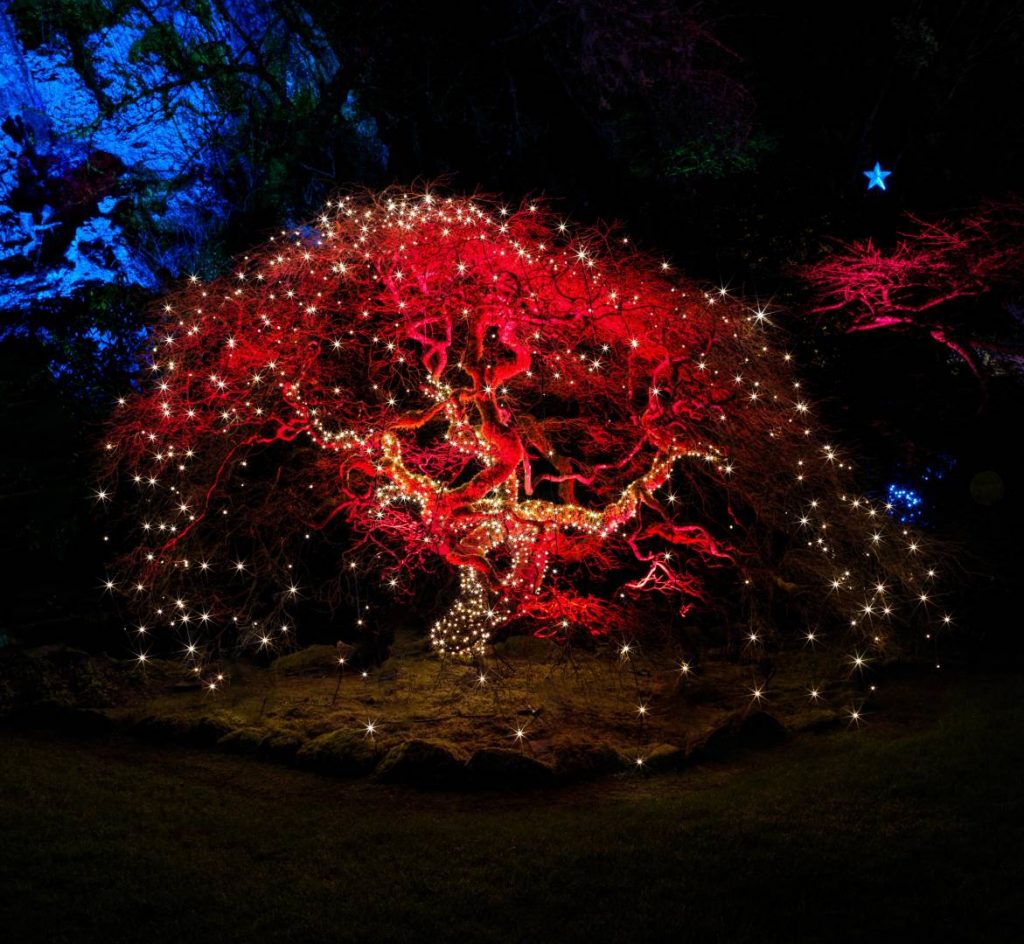
The Butchart Gradens is a world-class tourism destination and a National Historic Site of Canada. It comprises 55 acres of amazing gardens that can be enjoyed year round. The flowers, shrubbery and trees are a joy to see during the spring to fall seasons. For about a month starting in December, the gardens host The Magic of Christmas event where a large area of the site is covered in countless Christmas decorations and lights, creating a breathtaking experience. It has to be seen to believe how magical it is.
Magic
I had not been at The Magic of Christmas for about three years and I am still in awe when I walk in. The picture below is the view that greets you when you step through the entrance. It was awkward at first adapting to taking pictures in the dark and ensuring that the exposure was ETTR. But the large sharp LCD made for a truly lovely experience working on the tripod – for readily seeing and changing settings plus adjusting the exact image viewpoint without having to look in the viewfinder; it felt like I was working with a view camera. It slows you down in a positive way.
You are not allowed to block paths with a tripod but I put two legs over railings and found that perfect for also not being jostled by people very much. It was a challenge capturing this image as I had to wait for a break in the endless people to keep people photo bombing down to a minimum.
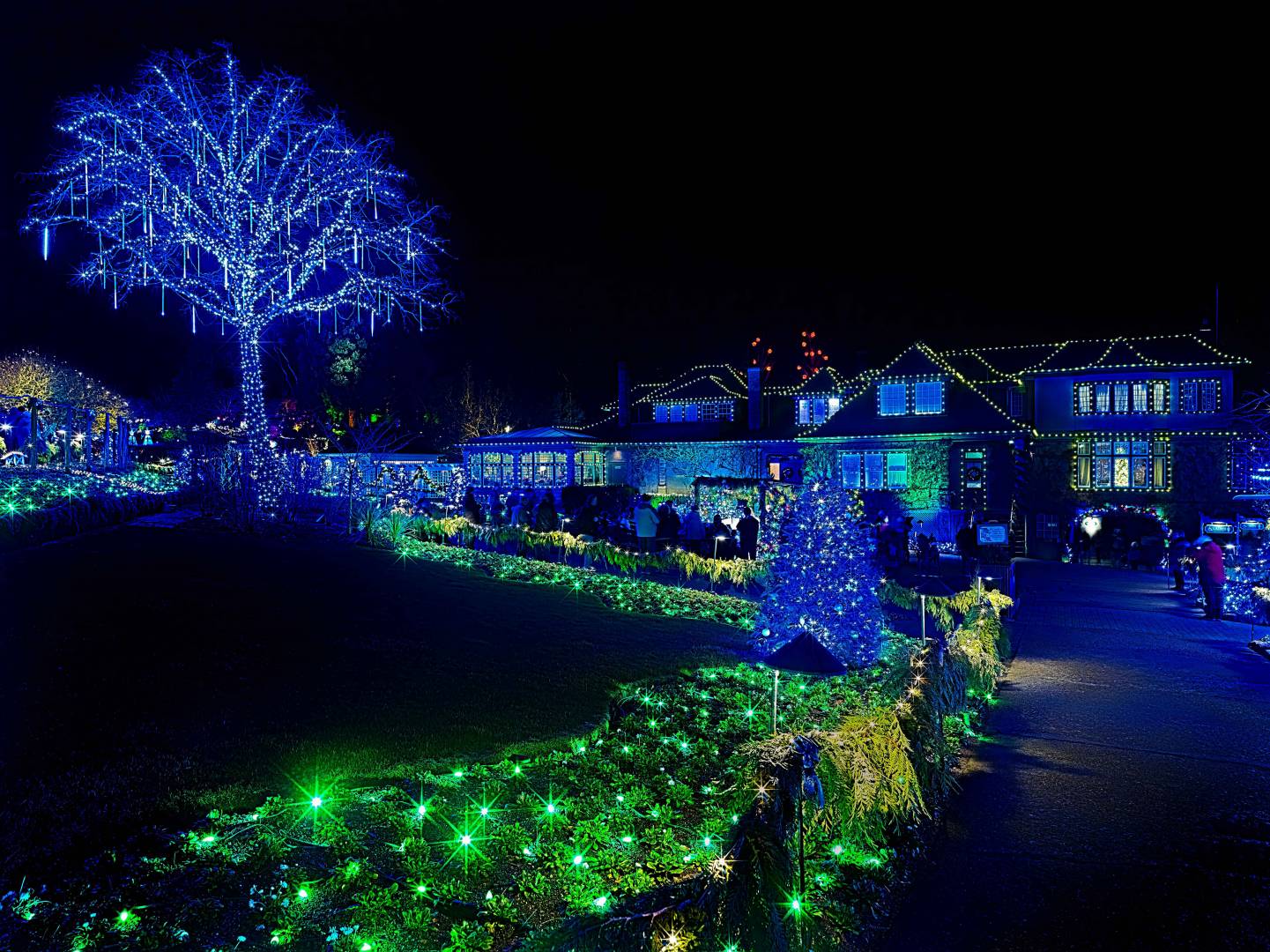
Night challenge
It is a challenge to capture the high dynamic range of the night scenes and still render natural colours, so I was keen to try out the Hasselblad X1D. I took it and
I also took the generally amazing Panasonic G9 and the Olympus Pro 12-100mm f/4. I have an incredible copy of the Oly 12-100 and cannot believe the professional grade of glass it represents for such a long zoom. I took only one photo with the G9 during the evening. I tried to take some more shots with it and could not figure out why I could not get the camera to focus. I forgot to bring my tiny flash light and had left my cell phone (no fake flashlight available) in the car to avoid distractions and keep my pockets free for lens caps and so on. This caused me great grief with the G9 and Oly glass as I could not see in the dark what the problem was with not being able to achieve focus – a disaster if I had had only one camera! In the darkness, I did not notice that the stupid Olympus MF clutch ring had pulled forward, putting it into manual focus mode. I gave up with the camera (not the camera’s fault) after roaming through countless menus and pushing buttons.
Gaffer
In the past, I tried gaffer tape on the Oly Pro glass but that prevented a quick shift to manual focus. Hence, I cheerfully sold my Olympus 17mm f/1.2 and 25mm f/1.2 because I kept missing decisive moments when the MF clutch ring moved of its own accord. Did I mention that this is a stupid design “innovation”? What was Olympus thinking – how about a button on the lens like everyone else? The Oly 17mm f/1.2 has a magical Leica-like 3D rendering but the MF clutch was more than annoying and I do have a redundant prime in the Hassy 45mm. The Oly 25mm f/1.2 is sharp but has a flat low micro-contrast rendering and is over-priced in my view, especially compared with the amazing Olympus 17mm f/1.2 and 45mm f/1.2. Hence, the 17mm f/1.2 and 25mm f/1.2 have found new homes. I have kept the 45mm f/1.2 as it has a gorgeous rendering and is worth the haptics headache.
The weather was unusually warm at 9 degrees celsius when I arrived at 5pm. Normally the temperature would be zero to 5 at that hour, so this was a real treat for my naked finger tips. This made for my most pleasant winter experience here. All my happy snaps with the Hassy were taken on the tripod of course.
Panasonic G9
The image below of the musicians was captured with the Panasonic G9 and I am amazed at the quality. There is certainly no need to apologise that it is not full frame. I had never taken night images with it before and I am delighted with the result. The image stabilisation dramatically helps in keeping down the ISO and noise. A very nice thing about M4/3, compared to full frame, is that there is a lot more depth of field at a given aperture, plus two stops more light helping keep ISO way down.
Combined with amazing m4/3 image stabilisation, you can get a fantastic sharp image. I had tried full frame on this subject in the past and was never quite happy with the results. Ignore people on the internet that trash M4/3 and declare its early demise. Instead, get out there and enjoy photography and your fabulous images without having to carry the heavy glass that accompanies larger sensor sizes.
The musicians had just started and alternates hourly with carollers. I really enjoy the singing but was not going to hang around for an hour when the lights were coaxing me to get on with my much needed shutter therapy. So I proceeded onward toward more captivating lights.

These trees appeared immediately as I stepped around the corner and was enchanted by them. This was a new display and I spent a several minutes deciding on the correct vantage point. To get a great angle, I had to step over the public boundary fence and immediately got eye-balled by staff. I looked at them and smiled and acted like I was supposed to be there. When they saw my camera mounted on the professional-grade tripod they let me continue exploring for the best vantage point; I guess I looked like a professional at work.
Dynamic range
As a curious experiment and comparison test, I also tried to capture this scene with the Panasonic G9 but the dynamic range was hopeless. Processing various exposures resulted in the red decorations in the background appearing as though they were hanging in dark space with ghosting of the trees. Plus there was no quality image in the grassy area in the foreground or I got burned out lights. The Hasselblad X1D files are amazing. I could bring up images to look almost like daylight shots, with sharp detail in the shadows. However, I wanted a natural look not the poorly processed unnatural “HDR” look often seen.

Christmas card
The dining room of the gardens was the next scene encountered. I have never dined there but it looked like such a delightful Christmas movie setting and I felt tempted to go in. Again, I love the natural colours and look to the scene. This image is currently my first choice for my next Christmas card. I send out handmade note cards to my clients and friends (I am working in real estate) and a number of people collect and also frame my cards so it is a nice outlet for my photography and helps motivate me to capture images.
I send out about 150 Christmas cards each year. I like to print images rather than just have them sit on the computer or internet. There is something about holding a photo in your hands.

In the Quarry
The photo below is taken on the site of the original quarry, from the top edge. It is hard to imagine how many lights there are. Before I forget, I find the XCD 30mm f/3.5 to be the most incredible wide angle lens, in the general range of 24mm full frame equivalency, I have used. Besides a gorgeous and ultra-sharp edge to edge rendering from wide open, it creates the most amazing crisp sun stars that I have ever seen. I cannot wait to try it out on cars, motorcycles, and bicycles.

It was truly amazing to get down into the quarry and be immersed in the lights. There were so many image options but, knowing the size of the gardens, it was important to keep on moving. This is a place that a number of shoots would not exhaust the creative opportunities. If the image is zoomed, there are endless sun stars.
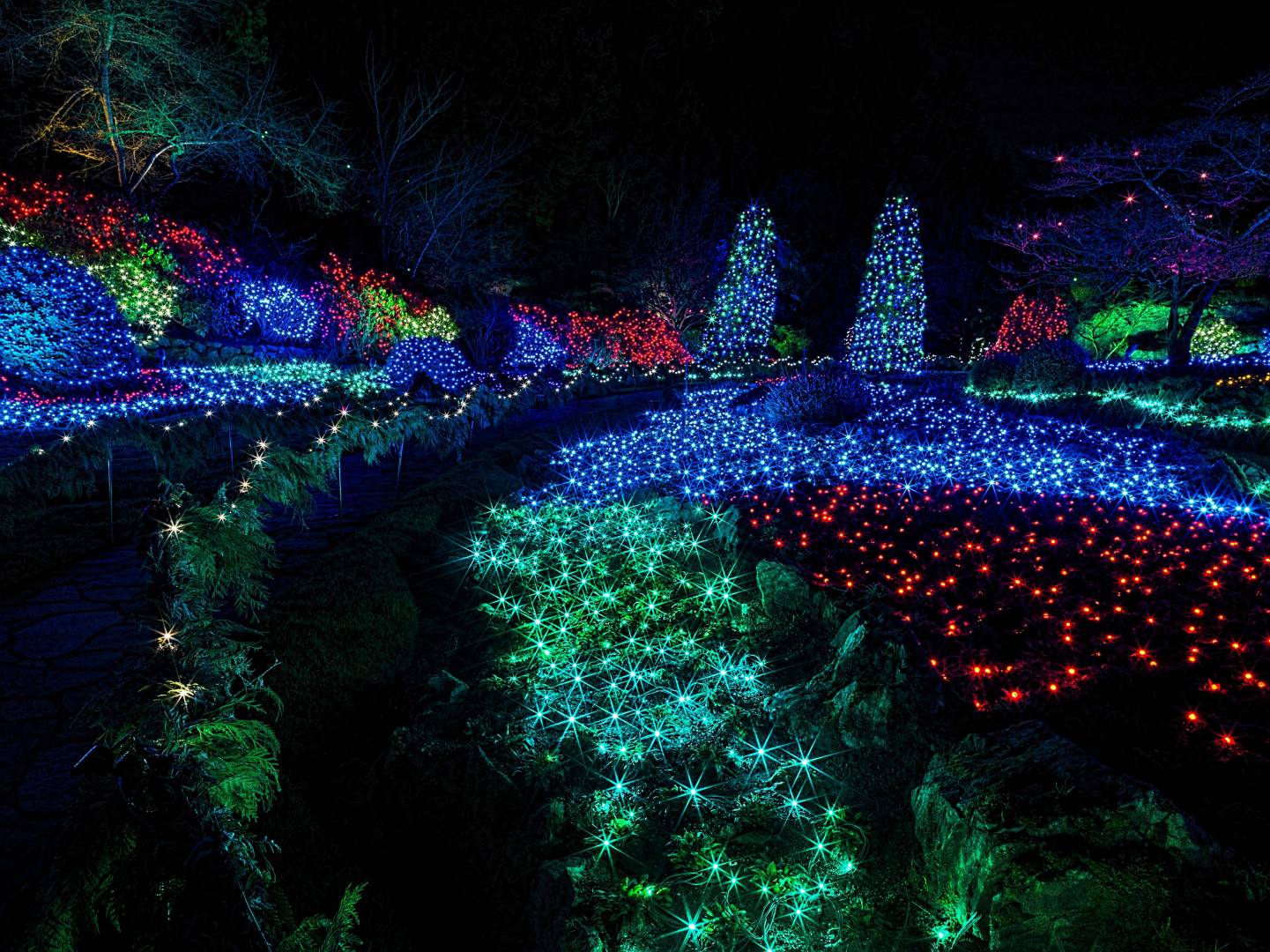
Tripod trials
The red tree blew me away and stopped me in my tracks. The angle and height of the optimal camera location was first determined before setting up the tripod. It was tough setting up because the path was narrow and people jostling me was a regular problem. It is important to decide view point angle and height before setting up a tripod or the tripod will anchor you to a less than optimal position. It was interesting to observe people only stopping because they saw me with the tripod set up. Then they would notice the tree and start taking pictures with smartphones and often the flash was going off.
This is another contender for my next Christmas card.
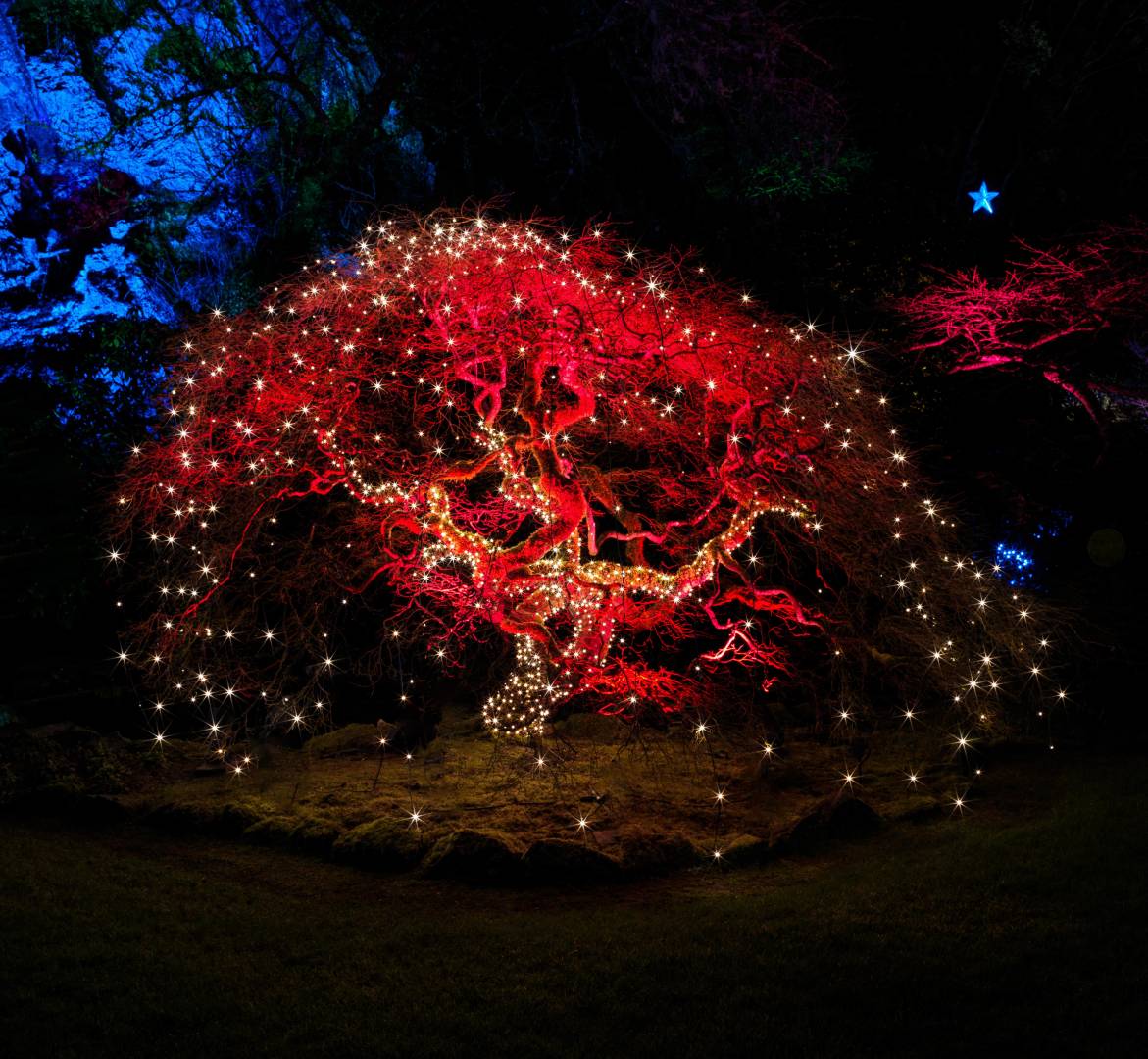
Challenging
The pond scene was an extremely challenging place as the subject dynamic range was enormous but the colours out of the X1D are incredibly natural. This camera has the most natural colours I have enjoyed and I do not experience anywhere near as much sensitivity to colour shifts with contrast adjustment. Some cameras have driven me crazy with colours shifting in hue and saturation as contrast is adjusted — then, if you fix one colour, another colour goes off kilter.
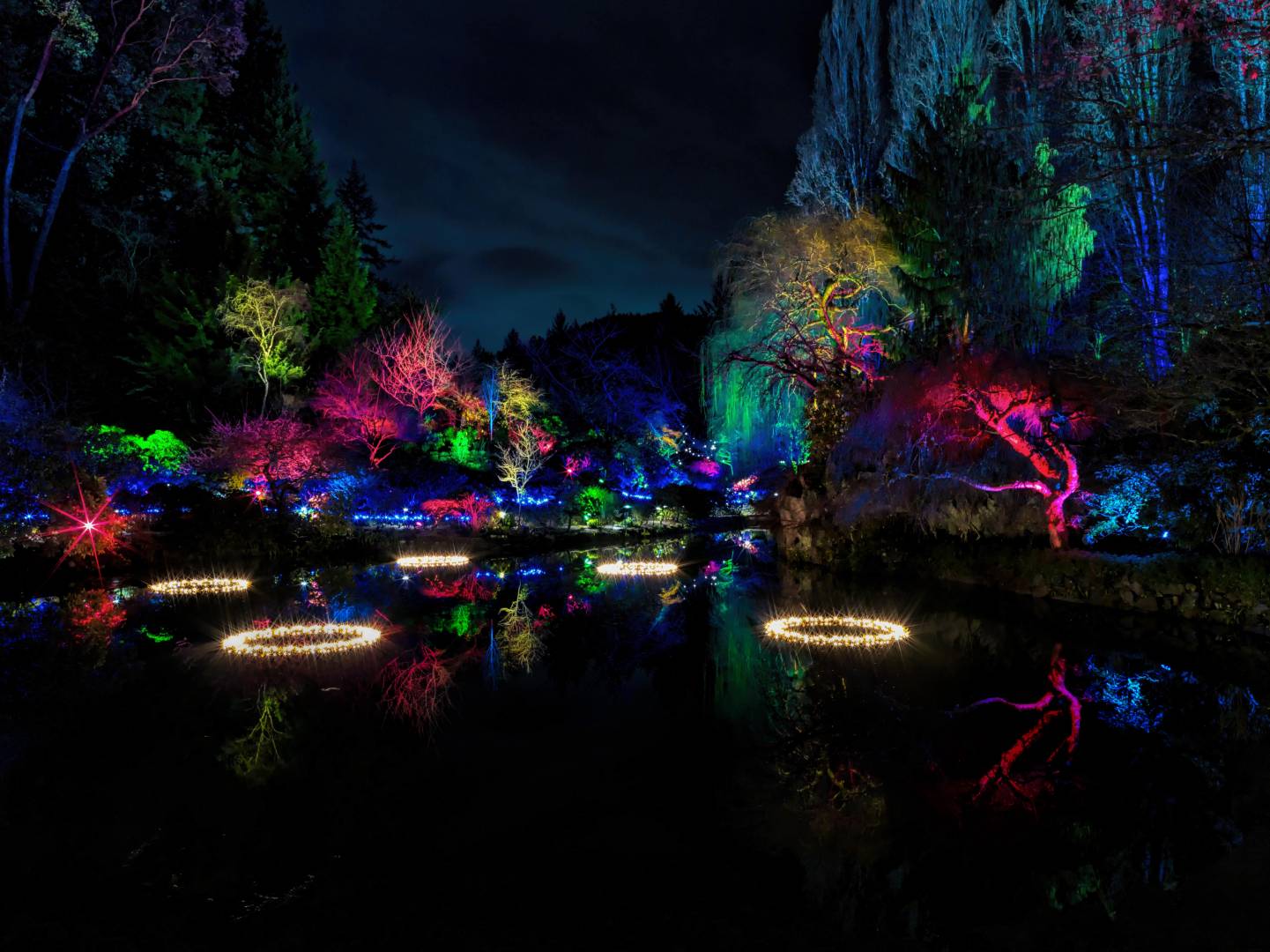
The Winter Fountain feature was the most challenging subject to capture. The spray was rapidly changing shape and cycled quickly through various colours and tones. It took about 20 minutes of cycles before the deep red was captured at full saturation without a bright white light up the centre overexposing the spray. If I was slightly late on the shutter, the magical moment was missed. Lots of practice was gained on colours that were not as appealing to me. This is a great hobby for helping me to learn patience and perseverance which is great for helping keep my marriage to an awesome wife together after 38 years.
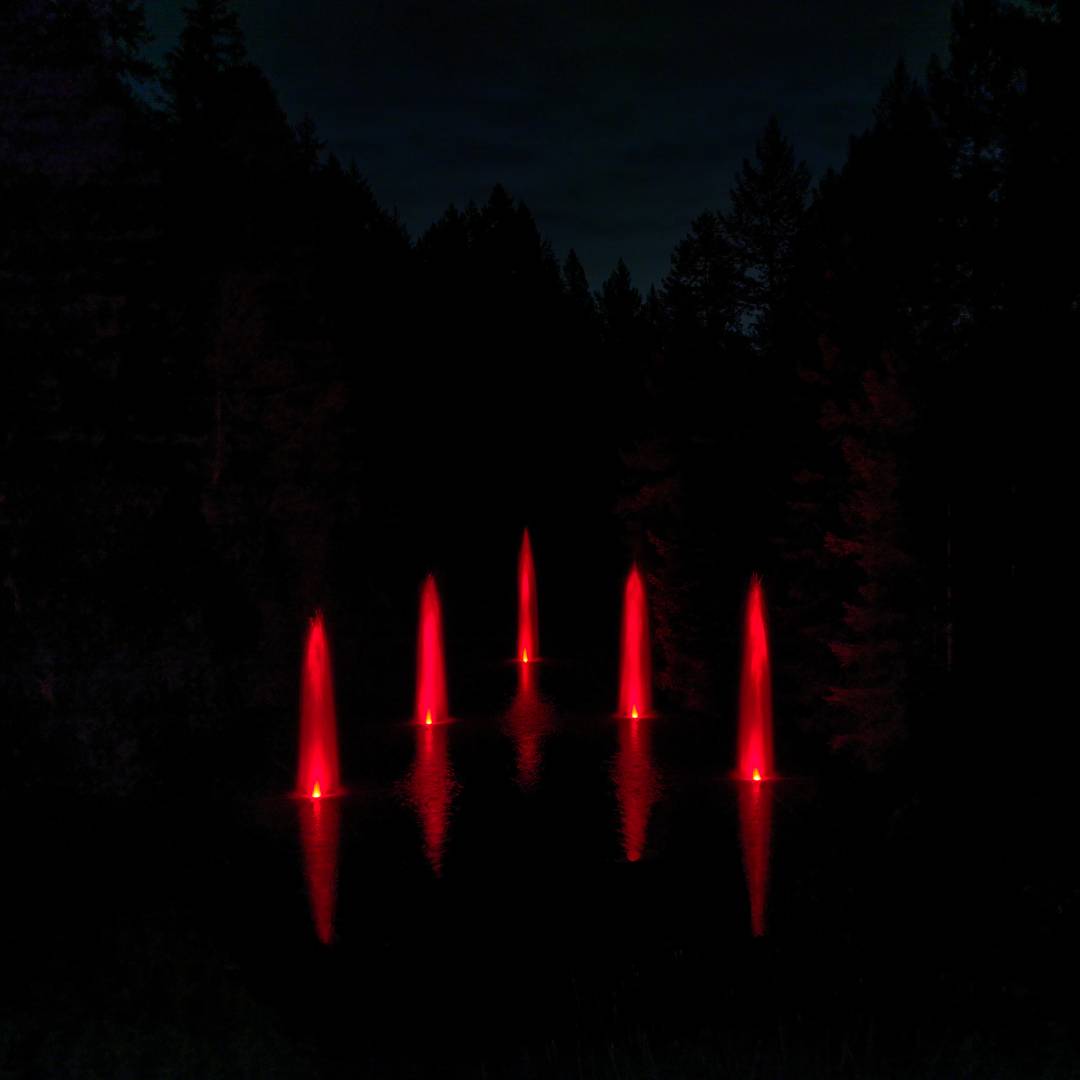
File flexibility
The scene of the house was another challenging high-dynamic range subject for keeping a natural looking image. The raw file is truly incredible for artistic possibilities. I tested the capability of the X1D by initially brightening the image and was able to make the whole scene bright with detail and natural colours and no significant noise. That was not the aesthetic rendering desired but it was a revelation on the file flexibility. The image was then processed for the interpretation I wanted and the front corners were darkened to keep the viewer from being led into the image.
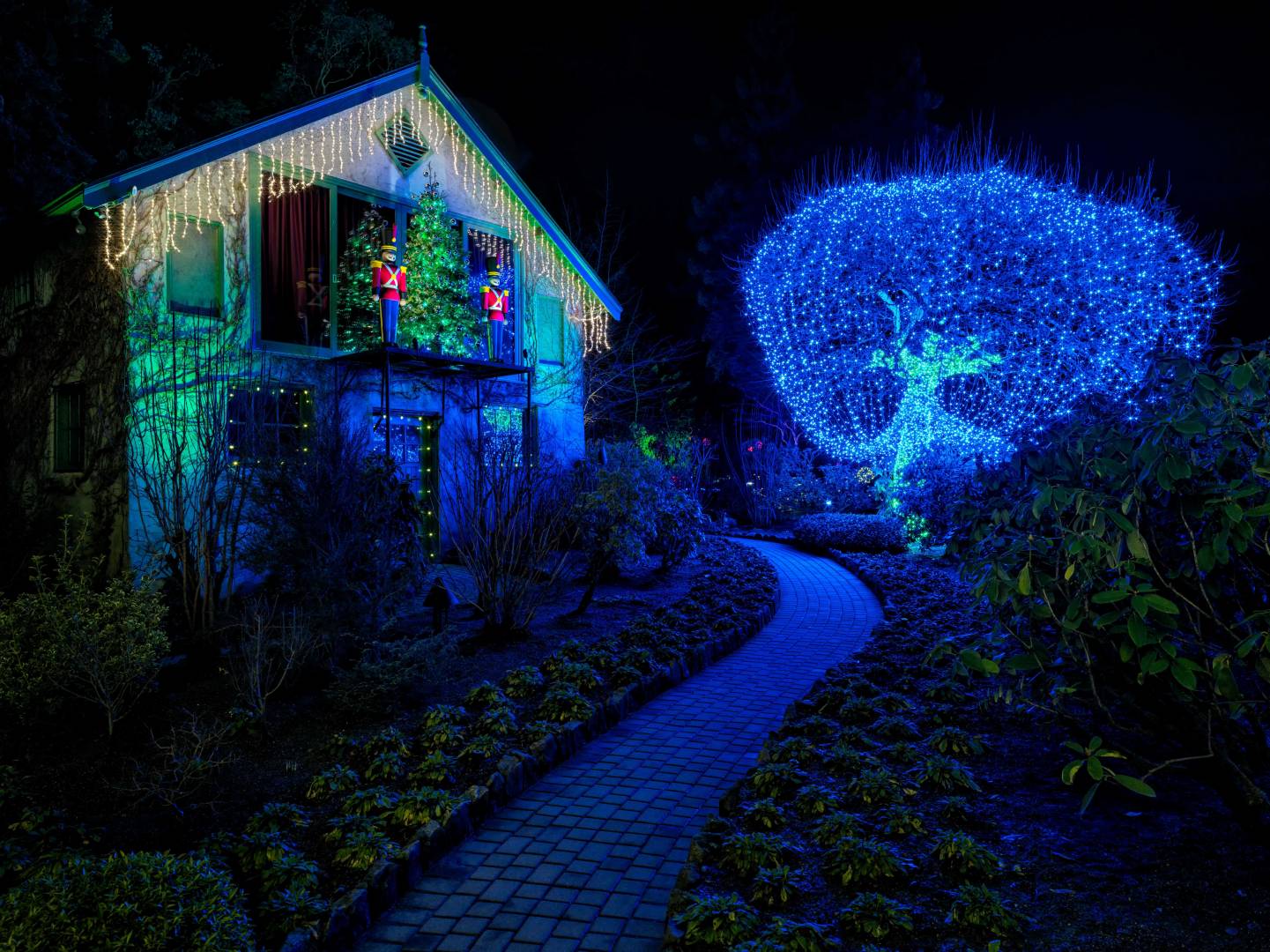
All the previous Hasselblad images were captured with the XCD 30mm (full frame equivalent of 24mm). This scene of the eight milkmaids a milking required a longer lens, so the XCD 45mm f/3.5 (full frame equivalent of 35mm)was bolted on. The theme in the gardens is the 12 days of Christmas and each day has a setup in the garden.
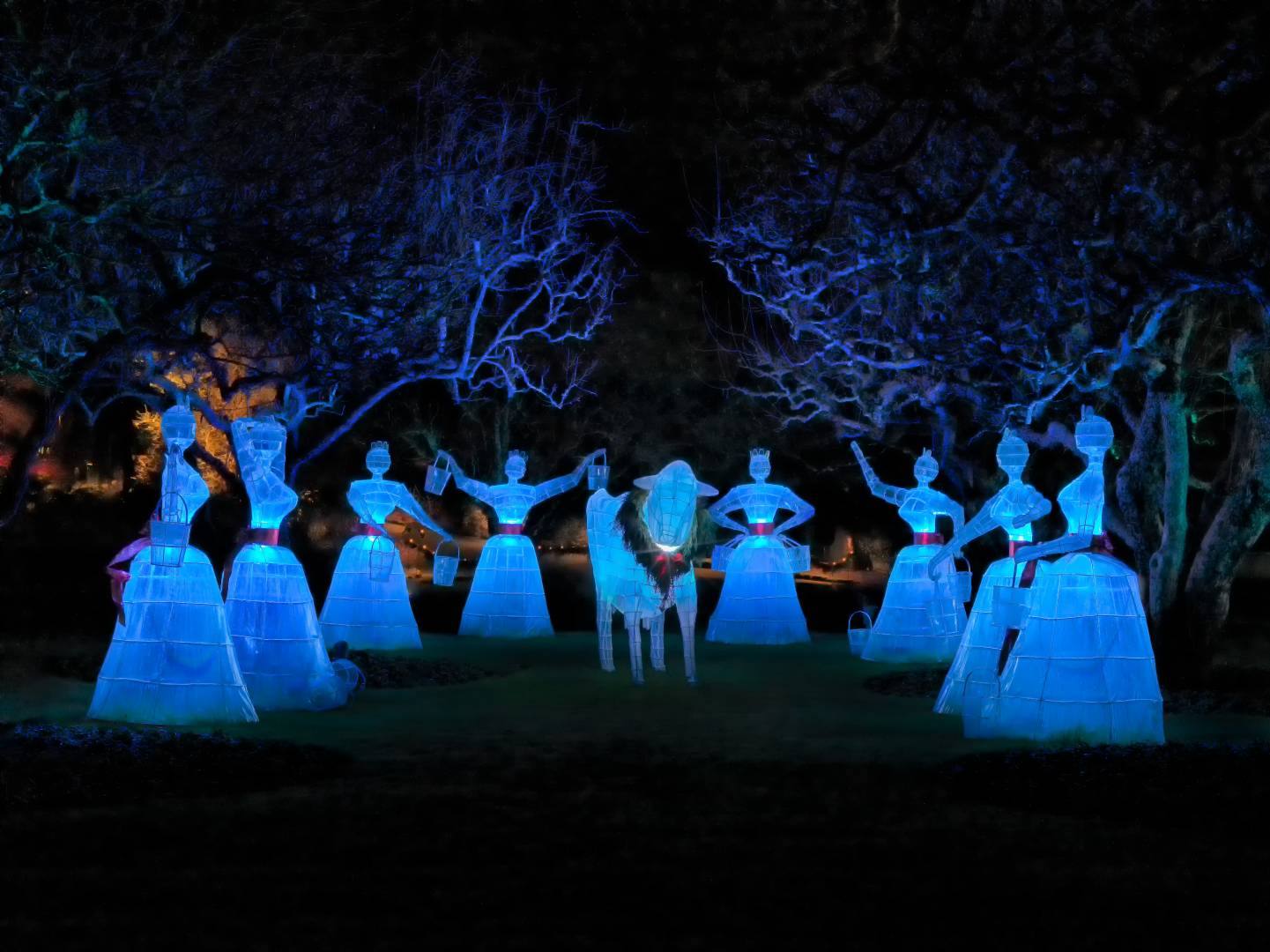
Asterisk
The next interesting large subject was this enormous asterisk decoration with the individual lights turning different shades from white to full density of a particular colour. Often, there were various colours in the design and the light pattern changed very quickly and created a feeling that it was dancing in rhythm to the four musicians playing nearby. The pattern that I preferred was a solid dark blue or sold dark red. White lights in the pattern were not visually attractive to me for an image and occurred frequently in the patterns. After about 25 minutes of trying to capture solid light patterns, a solid red pattern was captured (a tripod is truly a blessing at times) – moving on….. armed and ready.
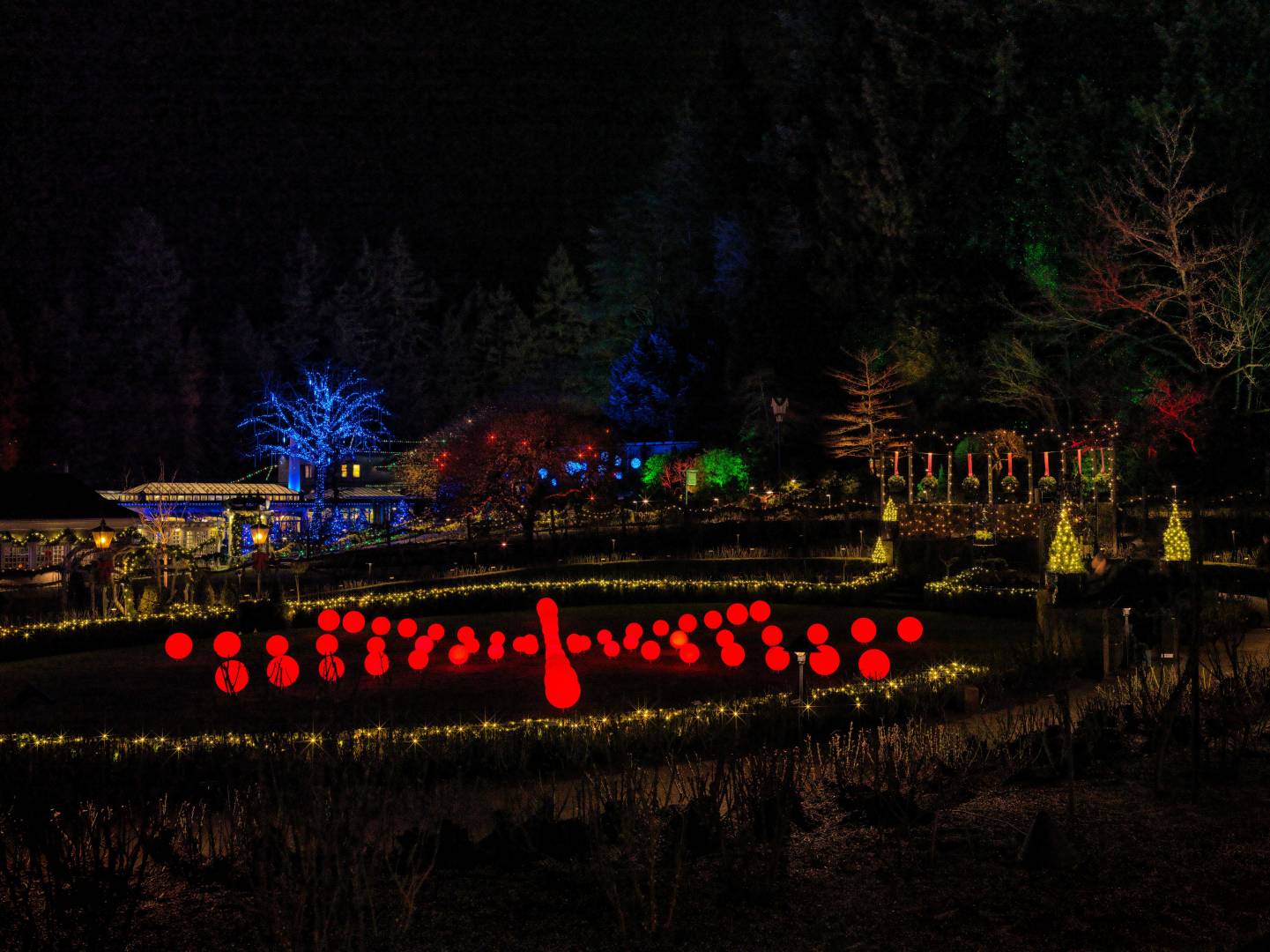
Sun stars
The “tree” scene from the opposite side appealed to me and again there was a methodical search for the best view point. My wife loves this image (and the other “tree” image) but she wants me to remove the background and show only the trees. I think it works both ways; a great opportunity for two distinct images out of one picture. Close inspection, shows very nice crisp sun stars but they are not nearly as big as the XCD 30mm f/3.5 in general; it is important to know a lenses rendering when you have lens options for a scene so that the desired effect is achieved.
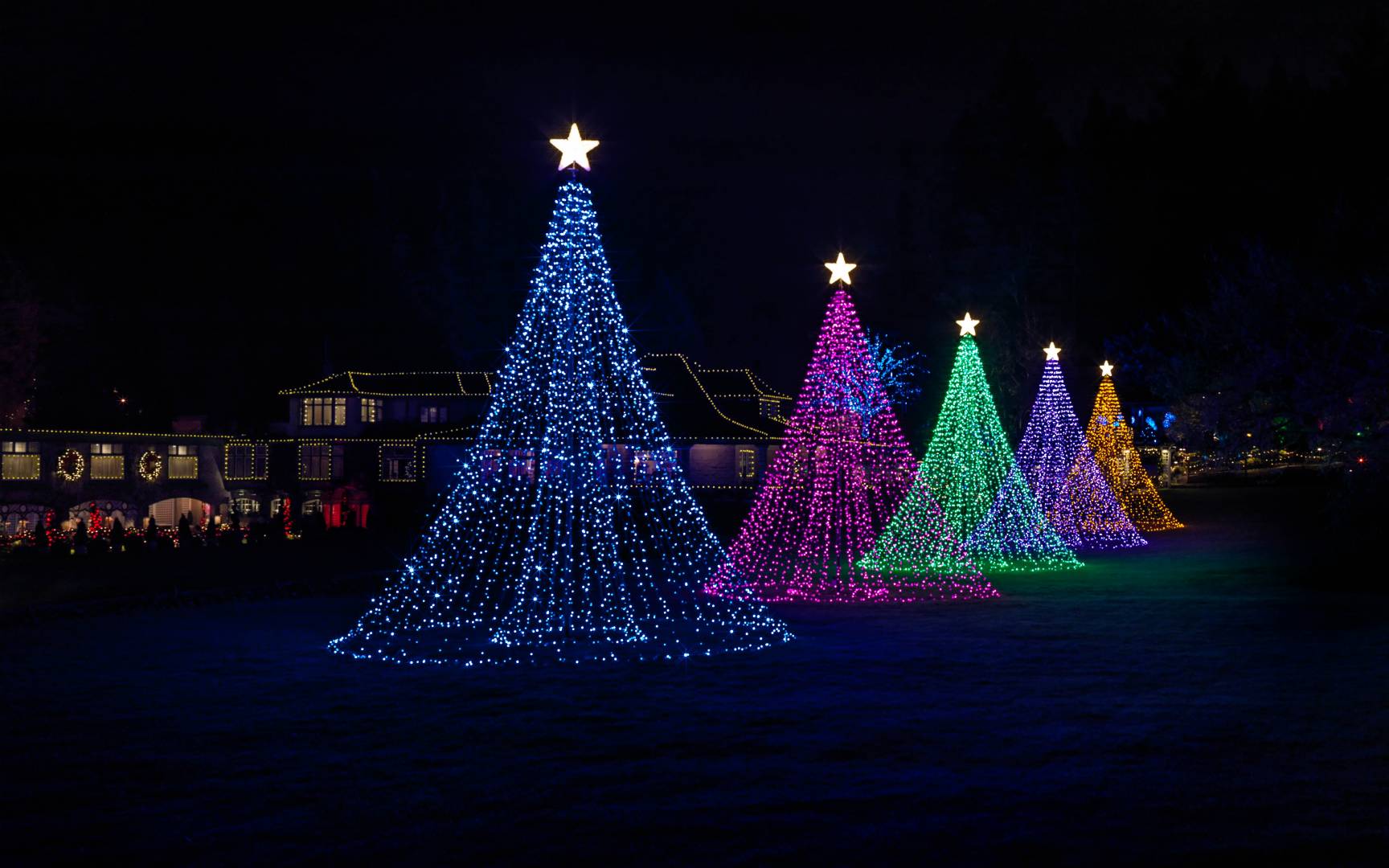
Processing for depth
My final image was a delight to capture. I had taken this same scene previously with a full-frame Sony and was never truly happy with the final image looking as natural as I wanted. This image was very easy to process and all I did was some dodging and burning to balance the image. I try to process my images so they have a depth to them and do not look like they are a scene that has been steamrolled flat. That is accomplished by finessing contrast curves and delicate dodging and burning. I never use contrast curve presets as that generally makes images look harsh or flat. This particular image has the most pleasant sun stars that I have ever achieved out of the 45mm f/3.5.
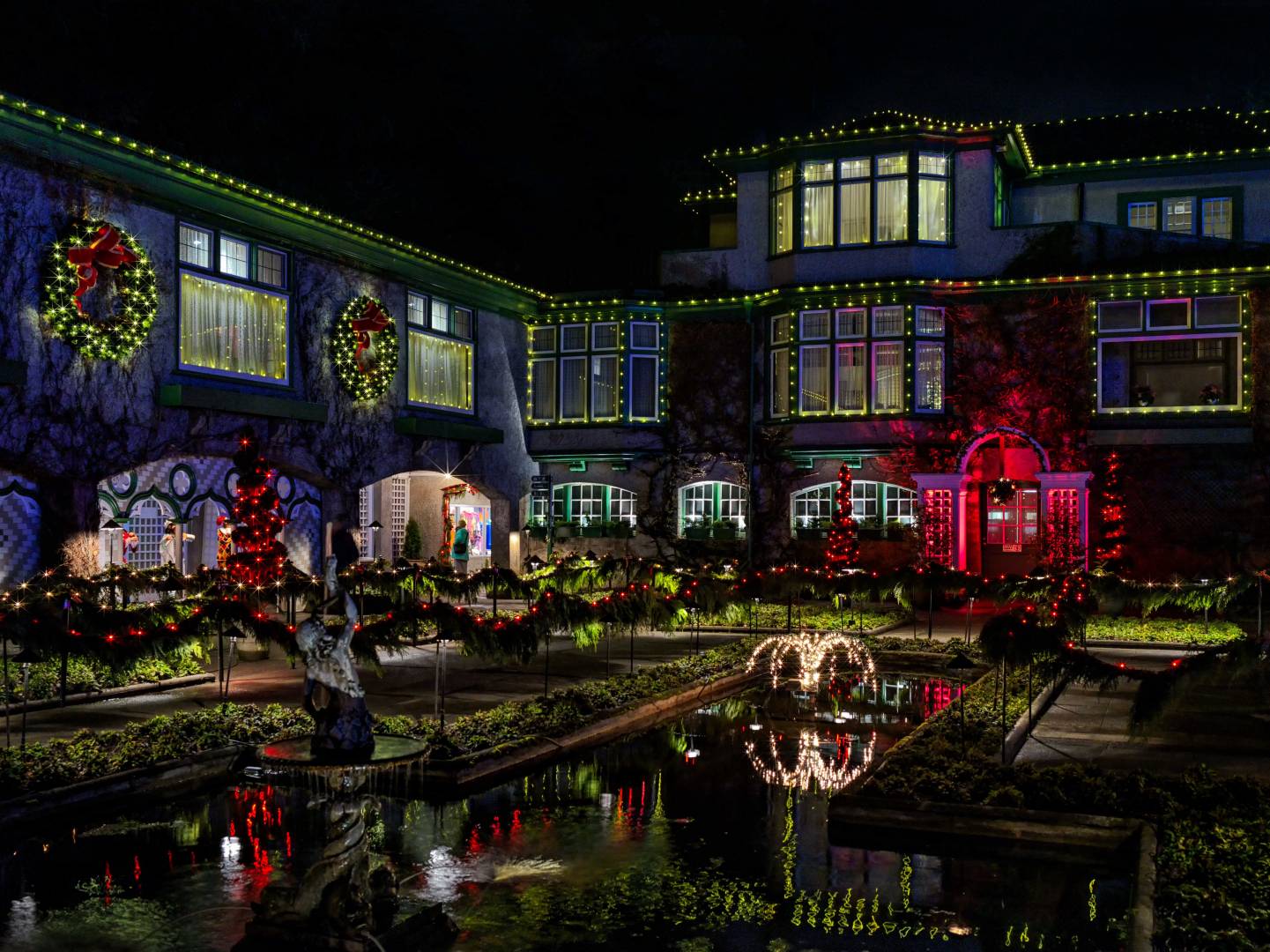
The shutter therapy stroll lasted from 5pm to 10pm and was a fabulous boost to my mood after a long exhausting week. I almost did not go but it was now or never for my Christmas adventure. I feel blessed to be able to see the world more clearly when I walk with a camera in hand. Most people are walking around not noticing things — preoccupied with their thoughts or their smartphone. I feel I have the fresh eyes of a child when there is a camera in my hand. Even if I come home with no keepers, I have enjoyed the journey by being truly in the moment engaged and experiencing my environment.
Delight
In summary, the Hasselblad X1D is a delight to capture images with when used for what it was designed for. I waited a year thinking that a new version would come out and solve the so called “problems”.
Then I realised that if this camera is good enough for the talented and skilled Ming Thein to use, why am I waiting. Amongst the noise on the internet, I found a couple of competent reviews and decided that it suited my needs and desires and that the great price reduction opportunity was the perfect time.
The camera is a pleasure to use. I prefer the haptics on the Leica SL but this camera has very good haptics and a bigger sensor in a similar size. I miss having overexposure warning/histogram prior to taking photo but it is not a deal breaker for me. I did not like the shutter release at first, but adapted to it by having my finger half on it and half on the body surface in front of it. Then rolling my finger pressure down solved the problem but who would think they could not get that perfect.
There is no perfect camera, but this camera is a joy to use within its application: methodical shooting. Most importantly, it will give me the Joy of Photography for many years; striving to capture compelling images out of chaos.
I do not sweat specs, mostly incompetent reviews, and the siren marketing call to the next camera which usually has no practical difference to the current model. If the camera delivers, I am happy — no matter how old it is. The X1D has been around for a while but it is far from obsolete.

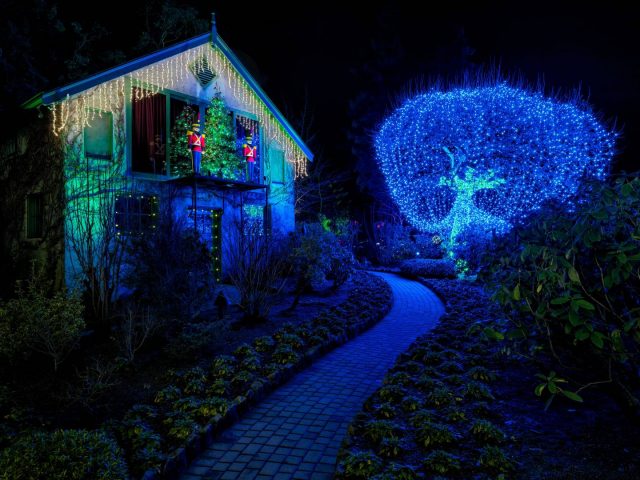




A great series of shots taken under very difficult lighting. I’ve tried similar subject matter and found that very few of the pictures capture what I wanted. A good article full of useful information.
Hi Richard, thanks for your comment. I posted more detailed capture information than usual as I was never fully satisfied with my results until the Hasselblad. I definitely would not have been happy with the M4/3 results – but M4/3 is excellent for most other subjects so I cheerfully own it. I found it frustrating in my early years, and even today, when I look at a great photo in a superficial article and cannot achieve it. I found that I had to take courses and apply the information and grow. I did not want to write an article that just talked about the event without providing some insight into the image capture. I chose the settings based on depth of field and keeping people invisible due to moving faster than the shutter speed – there were a lot of people there! I always checked image after to see if significant ghosting was there. One cannot have a definite recipe for this but experience provides a great starting point.I also have a lower tolerance for noise in my images at a certain ISO than most reviews and that is a personal choice. But I also print larger than most people need so one needs to really make choices based on need versus what most of the “gurus” that show no great images suggest. If I do not have a camera with me that can take the image I need, I do not sweat it, I just enjoy the moment and journey. I am glad the article was useful as we all can learn from each other. Thanks, Brian
Great read. You have incredible knowledge on cameras and their usages as well as a clear free spirit. The images are impressive and skillfully shot. The red tree and pond scene really caught my attention, perhaps Christmas card contenders?
Hi Ashley, I appreciate your kind comments and almost am getting puffed up but my wife will correct that feeling quickly! I have decided on the red tree for my next Christmas photo. Thanks, Brian
Thank for an excellent article, and some great images. Brian I have decided to follow your camera naming fashion – i’ve never considered naming mine, but it seemed kind of fun. So, I have now added names to both of my cameras – so enter the fray – Larry the Leica, and Norbet the Nikon.
Hi Dave, thanks for your kind comments. I tried to make the article appeal to a broader audience than pure X1D but who would have guessed that naming equipment would pique someone’s interest 😊. I got the idea from the blog dearsusan as one or more of the blog writers named glass that was special to them. I have named my Leica Q-P Lady Di as she is so refined, elegant, gorgeous! I also name glass that has a special rendering to me. I do not name my zooms,for instance,as they are more of a general tool too me. I pick equipment for an outing and it helps clarify in my mind picking the right tool to inspire me and achieve my creative vision when I associate the name with a application. Anyway, it makes it feel more fun and personal using the names-besides the product names are boring and long! Eek, Mike will probably not accept future articles from me now that he thinks I am certifiable! By the way, I just received a lens that I have named Bad Boy – look up american definition for a clue to why I chose the name. I also need to thank Mike for editing my article and adding all the perfect titles throughout the article. Thanks Brian
I wouldn’t worry about being certifiable – aren’t all of us. If you consider we walk around in all weathers, with a small box of magic and engage in people watching, talking and capturing moments of pure joy.
Bad Boy – Ha ha ha (I cannot find emojis to fill the space).
We all thank Mike for tidying up our often meandering discussions about our passion. More so when we get lost in the fog of words or excitement of thinking we are being clever. But then thats what a decent editor is there for – to guide his flock in to something that makes it readable for the masses. 🙂
Looks like a great relation with your new companion Max, really enjoyed viewing another special spot in the world. Thank you, looking forward to more of your photos.
Hi John, I am happy that you enjoyed the article. I love Max even though he has some eccentricities – maybe I love him more because of his eccentricities. Pursuing an artistic hobby involves being out of the norm and I am comfortable with that and actually embrace it! I am amused when people do not see anything in their own area to photograph but they would travel to somewhere else to take pictures. It is all around us. However, I did want to show a travel worthy destination that the silent majority on this blog might discover – for a free Guiness or five 🙂 I would cheerfully escort a reader around the Butchart gardens! For you, I would do a free tour. Thanks, Brian
Great images Brian. Taking excellent kit to the limit with a thoughtful analytical approach. Thank you for the article. Enjoyed it.
Hi Wayne, I am glad you enjoyed the article. Mike, prodded me to submit an article some time ago but due to relentless health issues I did not follow through. I am much more of a photographer than a writer but it is nice to get one’s photos off the hard drive and to possibly share information and inspiration to others. Thanks, Brian